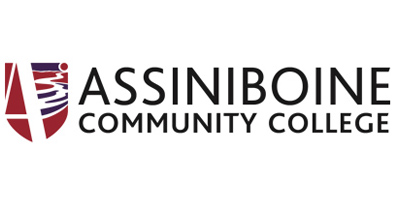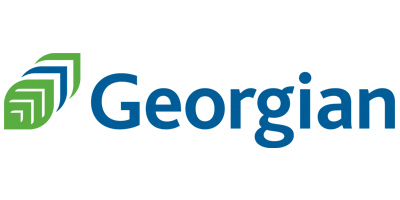Onboarding new apprentices in the skilled trades requires careful planning and a structured approach. Becoming a skilled trade professional takes time and dedication. Be patient with your apprentice and give them the support they need to succeed. With the right onboarding and guidance, they will become valuable members of your team. Remember to foster a culture that values diversity and mutual respect by creating a workplace where everyone feels comfortable sharing their opinions and ideas.
What you can do:
- Develop a new employee orientation plan
- Start the orientation process early (before the apprentice arrives for their first day)
- Ensure all paperwork is ready for the new apprentice to read and sign
- Arrange a meet and greet with your team or the team the new hire will be working with
- Assign a work buddy who is at a similar level to the new apprentice
- Review goals and milestones as per the apprentice logbook
- Commit to a longer onboarding process
- Schedule one-on-one check-ins
- Take an onboarding training course
Tips for Onboarding Apprentices
Orientation to Your Company
The first several days on the job are crucial to the success of new employees. Consider the time spent on orientation as an investment for you and the employee. Provide your new apprentice with the “big picture” of the business or organization. Outline personnel policies, including work schedules and hours, probationary period, pay rates, vacation, sick leave, and other benefits. Don’t forget to introduce the new employee to the rest of the team!
Safety
Safety is a critical part of orientation in skilled trades and on job sites. Apprentices should receive safety training as part of their onboarding. This training should cover safety procedures, what personal protective equipment they should be wearing, and emergency protocols. See more in Workplace Safety.
Journeypersons
Assigning a journeyperson to mentor each new apprentice will provide guidance and support throughout their training. The journeyperson will provide hands-on training, answer questions, and foster an inclusive environment where apprentices can learn and benefit from diverse perspectives. This key relationship will help apprentices build and develop skills.
Tools and Equipment
It is essential to inform the apprentice about the expectation to purchase tools and equipment for their individual use on the job site to fulfill their responsibilities effectively. Also, suggest they label their tools to prevent loss or theft. Recognizing that apprentices may face financial constraints in purchasing all required equipment before they start, the employer should consider whether they are obligated to provide tools and equipment initially. Additionally, the apprentice and the employer can explore available financial supports to help offset these costs.
Expectations and Progress
Monitor the apprentice’s progress regularly and provide feedback on their performance.
Apprentices must understand the specific requirements and guidelines for maintaining their logbooks. Ensure you provide detailed instructions on maintaining and utilizing logbooks effectively with the apprentice and journeyperson.
Feedback and Communication
Encourage open and regular communication between the apprentice, the journeyperson, and the site supervisor. This practice will help to identify any issues early on and allow for adjustments to be made during the onboarding process as necessary.
Frequently Asked Questions when Onboarding for a Diverse Workplace
How do I create a more welcoming environment?
To foster a more welcoming environment, take deliberate steps to cultivate an inclusive workplace for apprentices from various backgrounds. Clearly communicate your expectations regarding employee behaviour, emphasizing inclusivity. Additional strategies involve promoting diverse representation within leadership roles and actively preventing discrimination or bias in the workplace. Embrace diversity by acknowledging cultural holidays or events, featuring diversity in company materials, and celebrating employee accomplishments that showcase inclusiveness.
How do I change the inappropriate behaviour of my site supervisors toward new and diverse apprentices?
Start by realizing that you may be unable to change someone’s viewpoint. Continue by providing the company’s policies and expectations regarding a tolerant workplace. Offer training on inclusion, unconscious bias, and cultural awareness to all site supervisors to ensure everyone has the same knowledge.
My new apprentice is not adapting to their work environment, making many mistakes, and creating frustrations and unsafe situations. What can I do?
Request that the journeyperson training the apprentice collaborate on a plan to help support the apprentice and future apprentices. Identify the areas where they are struggling and provide additional training time to help the apprentice grasp the concepts. Discuss with the apprentice workable solutions by providing inclusive and supportive adjustments to work routines. Sharing success stories serves as an effective means to guide and inspire new employees who are struggling.
How do I get my journeyperson to mentor a new apprentice whose experience differs from their own?
Communicate the benefits to your journeyperson while emphasizing how their guidance and support can contribute to a more inclusive and harmonious work environment. Highlight shared goals, such as professional growth, skill development, or project success. Doing this can encourage a sense of camaraderie and purpose. Recognize expertise by acknowledging the journeyperson’s experience and affirm their skills and knowledge. Emphasize the valuable insight they can provide the new apprentice. By implementing these steps, you can foster a positive mentorship dynamic and encourage your journeyperson to support and guide the new apprentice despite their differing backgrounds.
How do I deal with the complaints from new apprentices about inadequate washroom facilities, derogatory language in the break room, and offensive posters in common areas on the worksite?
You must lead the change of welcoming diverse apprentices to your workplace. Investigate complaints, take immediate action, and enforce policies and codes of conduct. Improving washroom facilities, setting an expectation for proper language and ensuring no inappropriate posters are in the common areas is a good start to changing behaviour. Taking action on the concerns of the new apprentices will build trust and send the message of the new expectations of a diverse workplace. Cleaning up spaces, language, and communication is better for everyone and allows for a chance to create a safer, cleaner, and more productive workplace.









